This is a list of the electoral history of Donald Rumsfeld.
This is a list of the electoral history of Donald Rumsfeld.
Illinois's 13th congressional district, 1962 (Republican primary):
Illinois's 13th congressional district, 1962:
Illinois's 13th congressional district, 1964:
Illinois's 13th congressional district, 1966:
Illinois's 13th congressional district, 1968:
1976 Republican National Convention (vice presidential tally):
1980 Republican National Convention (vice presidential tally):

Donald Henry Rumsfeld was an American politician, government official and businessman who served as secretary of defense from 1975 to 1977 under president Gerald Ford, and again from 2001 to 2006 under President George W. Bush. He was both the youngest and the oldest secretary of defense. Additionally, Rumsfeld was a four-term U.S. Congressman from Illinois (1963–1969), director of the Office of Economic Opportunity (1969–1970), counselor to the president (1969–1973), the U.S. Representative to NATO (1973–1974), and the White House Chief of Staff (1974–1975). Between his terms as secretary of defense, he served as the CEO and chairman of several companies.

Philip Miller Crane was an American politician. He was a Republican member of the United States House of Representatives from 1969 to 2005, representing the 8th District of Illinois in the northwestern suburbs of Chicago. At the time of his defeat in the 2004 election, Crane was the longest-serving Republican member of the House.

The 1976 Republican National Convention was a United States political convention of the Republican Party that met from August 16 to August 19, 1976, to select the party's nominees for president and vice president. Held in Kemper Arena in Kansas City, Missouri, the convention nominated President Gerald Ford for a full term, but only after narrowly defeating a strong challenge from former California Governor Ronald Reagan. The convention also nominated Senator Bob Dole from Kansas for vice president, instead of Vice President Nelson Rockefeller, who did not seek nomination for a full term. The keynote address was delivered by Tennessee Senator Howard Baker. Other notable speakers included Minnesota Representative Al Quie, retired Lieutenant Colonel and former Vietnam prisoner of war Raymond Schrump, former Democratic Texas Governor John Connally, Providence, Rhode Island mayor Vincent Cianci and Michigan Senator Robert P. Griffin. It is the last national convention by either of the two major parties to feature a seriously contested nomination between candidates.

Melissa Bean is an American politician who served as the U.S. representative for Illinois's 8th congressional district from 2005 to 2011. Bean is a member of the Democratic Party.

The 2004 United States presidential election in Illinois took place on November 2, 2004, and was part of the 2004 United States presidential election. Voters chose 21 representatives, or electors to the Electoral College, who voted for president and vice president.
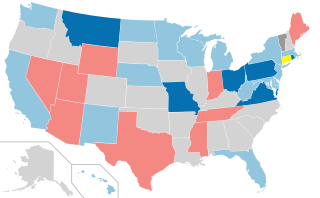
The 2006 United States elections were held on Tuesday, November 7, 2006, in the middle of Republican President George W. Bush's second term. In a political revolution that broke twelve years of Republican rule, the Democratic Party was swept into majorities in Congress, the governorships, and state legislatures across the country. This marked the first and only time either party achieved such a feat since the 1994 elections. These elections were widely categorized as a Democratic wave.
Missouri's 7th congressional district consists of Southwest Missouri. The district includes Springfield, the home of Missouri State University, the Joplin, Missouri, metropolitan area, Missouri's 5th largest, and the popular tourist destination city of Branson. Located along the borders of Kansas, Oklahoma, and Northwest Arkansas, the district occupies part of the Bible Belt with a strong socially conservative trend. George W. Bush defeated John Kerry here 67% to 32% in the 2004 election. Republican John McCain defeated Democrat Barack Obama 63.1% to 35.3% in the 2008 election. Republican and Former Massachusetts Governor Mitt Romney defeated Barack Obama 67.6% to 30.3% in the 2012 election. In the 2020 election, Republican Donald Trump defeated Democrat Joe Biden 69.91% to 28.93%. As of 2020, this district is the second most strongly Republican district in Missouri and is one of the most strongly Republican districts in the United States.
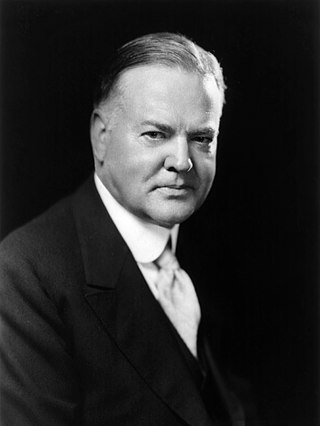
Electoral history of Herbert Hoover, who served as the 31st president of the United States (1929–1933) and 3rd United States Secretary of Commerce (1921–1928).
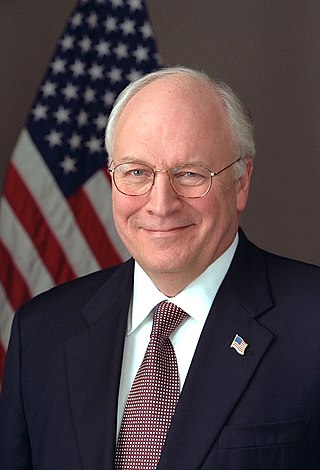
Electoral history of Dick Cheney, who served as the 46th vice president of the United States (2001–2009), 17th United States Secretary of Defense (1989–1993), United States representative from Wyoming, and White House Chief of Staff (1975–1977)

Electoral history of Bob Dole, United States Senator from Kansas (1969–1996), Senate Majority Leader, Senate Minority Leader (1987–1995), 1976 Republican Party vice presidential nominee and 1996 presidential nominee.

Electoral history of Lyndon B. Johnson, who served as the 36th president of the United States (1963–1969), the 37th vice president (1961–1963); and as a United States senator (1949–1961) and United States representative (1937–1949) from Texas.

Electoral history of Ron Paul, Republican U.S. Representative from Texas, 1988 Libertarian Party Presidential nominee and candidate for the 2008 and 2012 Republican presidential nomination.

Electoral history of Barry Goldwater, United States Senator from Arizona and Republican Party nominee for President of the United States during 1964 election
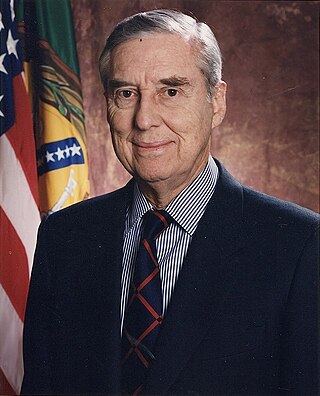
Electoral history of Lloyd Bentsen, United States Senator from Texas (1971-1993), United States Representative (1948-1955), United States Secretary of the Treasury (1993-1994), Democratic Party nominee for Vice President of the United States in 1988 and a candidate for 1976 Democratic presidential nomination
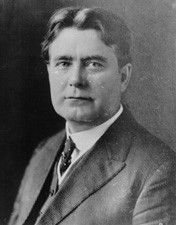
Electoral history of William Edgar Borah, United States Senator from Idaho (1907–1940)
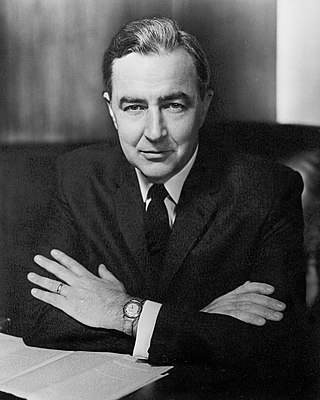
Electoral history of Eugene McCarthy, United States Senator (1959–1971) and Representative (1949–1959) from Minnesota. He was a member of the Minnesota Democratic-Farmer-Labor Party.

George McGovern, a Democratic Party politician from South Dakota, was first elected to the United States House of Representatives to represent South Dakota's 1st congressional district in 1956. He was re-elected in 1958, before making an unsuccessful run for the United States Senate in 1960 against Republican incumbent Karl Earl Mundt. After serving in the John F. Kennedy administration as director of the Food for Peace program, McGovern ran again for the Senate and narrowly prevailed over appointed Senator Joseph H. Bottum. In 1968, McGovern unsuccessfully sought the Democratic Party's presidential nomination at the Democratic National Convention and was re-elected to the Senate over former Governor of South Dakota Archie M. Gubbrud. In 1972, McGovern was successful in his campaign for the Democratic presidential nomination, but lost the election in a landslide to incumbent President Richard Nixon. McGovern was re-elected to the Senate in 1974 over Vietnam War veteran Leo K. Thorsness, but lost re-election in 1980 to then-U.S. Representative James Abdnor. McGovern made a final unsuccessful run for president in 1984 United States presidential election.
Electoral history of James G. Blaine, Republican politician who represented Maine in the United States House of Representatives from 1863 to 1876, serving as Speaker of the House from 1869 to 1875, and then in the United States Senate from 1876 to 1881. He also unsuccessfully sought the Republican nomination for President in 1876 and 1880 before being nominated in 1884. In the 1884 election, he was narrowly defeated by Democrat Grover Cleveland.
Electoral history of John Sherman, Representative, United States Senator, and cabinet member.
In his political career, between the years 1938 and 1994, Harold Stassen, a Republican, ran many campaigns for public office. He was elected governor of Minnesota three times, in 1938, 1940, and 1942.